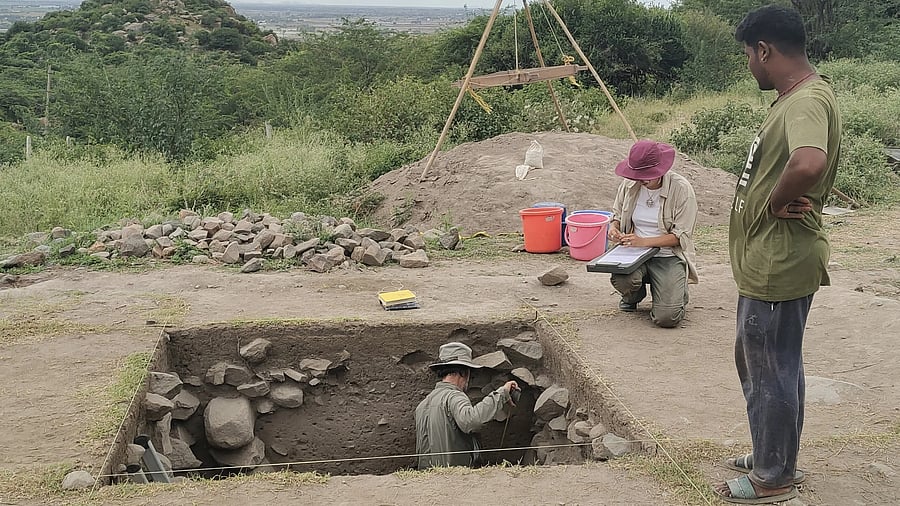
Credit: Special arrangement
Maski, Raichur district: The discovery of an inscription, dating back to the age of Maurya emperor Ashoka, first put Maski in Raichur district on the archaeological map. Now, a team of more than 20 researchers from the United States of America, Canada, and India has found evidence that there was a human settlement in the town dating as far back as 4,000 years!
The researchers, who have been digging around Mallikarjun Hill, near the Mallikarjuna Temple, in Maski and the Anjaneya Swamy temple in the town, have unearthed various artefacts and other tools dating back four millennia, hinting at what must have been a thriving settlement.
Prof Dr. Andrew M. Bauer from the US-based Stanford University, Dr. Peter G. Johansen from McGill University, Canada and Hemanth Kadambi from the Shiv Nadar University, Delhi-NCR, are engaged in searching for signs of human habitation and civilisation in Maski for the past three months, leading a team of more than 20 researchers.
The team started digging around in Maski after obtaining permission from the ASI.
Having identified 271 points of interest in the area being excavated, the team stumbled upon evidence confirming that the region around the Mallikarjun Hill and the temple were inhabited by people between the 11th and 14th centuries BCE.
Various cooking implements, such as earthen pots and pans, are among the artefacts that the researchers have unearthed.
“We have found evidence that indicates that there was a human settlement in Maski around 4,000 years ago,” Kadambi confirmed.
